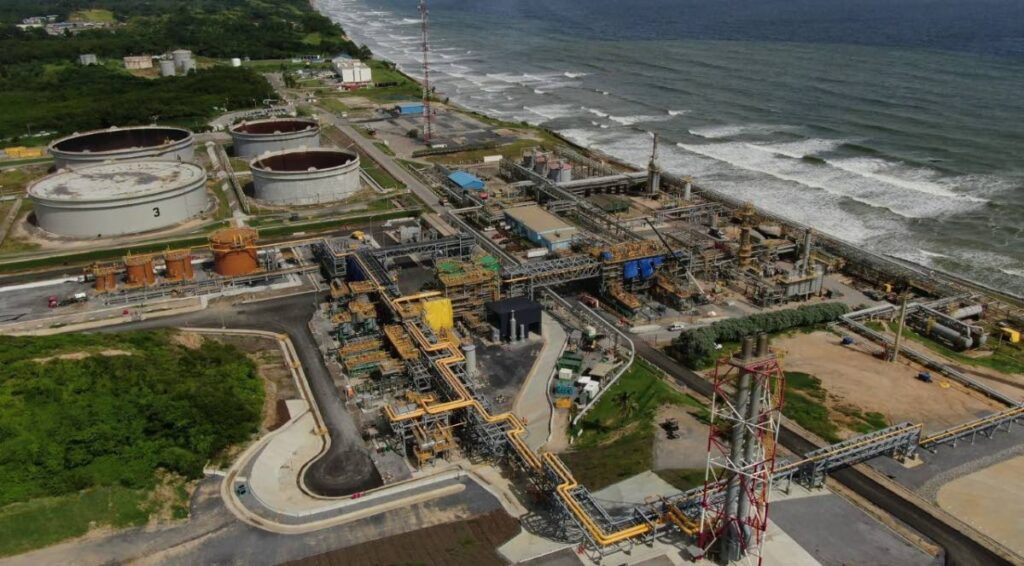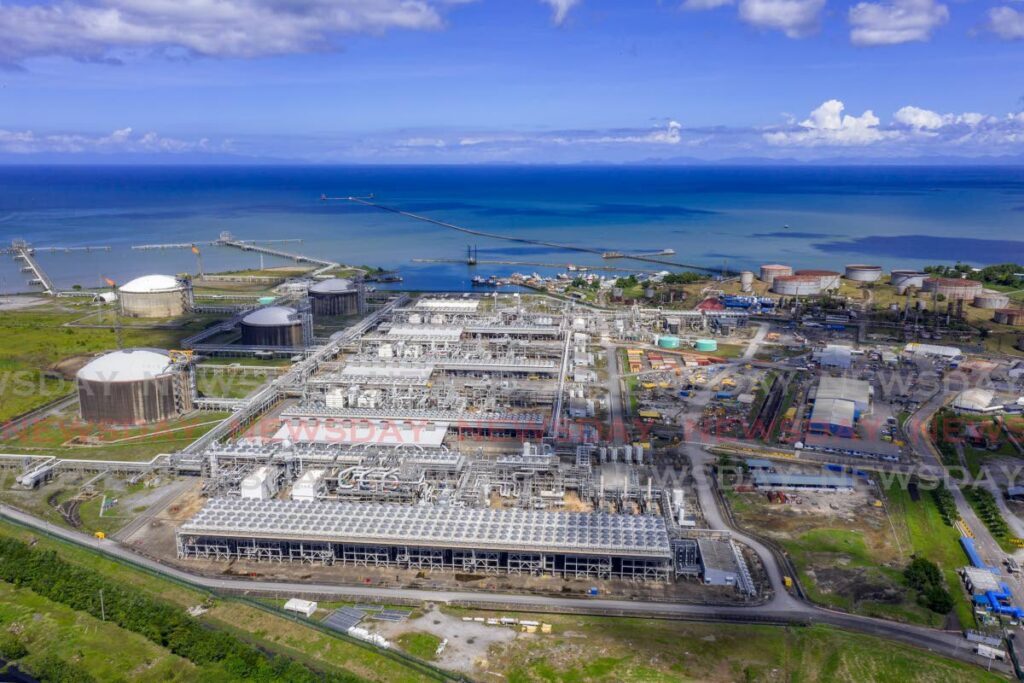New gas frontier: US-approved licences to boost hydrocarbon industry

FOR more than 100 years, Trinidad and Tobago has been, in one way or another, involved in hydrocarbons.
La Brea was the location of the very first oil rig in 1857. Since then, TT’s economy has benefitted greatly from the production of oil and gas, building a massive energy sector through the exploitation of these hydrocarbons.
Where natural gas is concerned, TT has been the leader in production and manufacturing of downstream products from the hydrocarbon for decades.
The first discovery of natural gas within TT's borders was back in 1971, two years after government joined with Tesoro corporation to acquire the local assets of British Petroleum.
In 2010, TT peaked in its production, churning out 4 bcf/d (billion cubic feet per day).
However, since then, production has fallen by a third, now producing 2.6 bcf/d, amid natural declines in resources.
This has prompted the government to seek new frontiers – new territories as sources for gas production.
The Manakin-Cocuina gas field, one of three gas fields which straddles the borders between TT and Venezuela, is one such region.
Late last month, the US government through the US Treasury’s Office of Foreign Asset Control (OFAC) awarded TT a licence to explore and exploit gas from the field.
This is the latest among a list of new projects, deals and licences to access fields, which could, if each comes online, see increases in production from as early as 2026.
Gassing up
On May 29, Energy Minister Stuart Young made the announcement on the new OFAC licence.
It will give TT access to an estimated one tcf of natural gas. Two-thirds of the field is in TT waters – Block 5b, run by bpTT – while a third is in the Cocuina territory in Venezuelan waters.
In May, Young said the licence lasts until May 31, 2026.
Sources pointed out to Business Day, TT’s side of the field is less than 30 km from bpTT’s Juniper platform, which aggregates gas from its juniper field.
This platform has a tie-back (a subsea production infrastructure with a line back to the gas network) to the Savonette platform.

While neither the company nor the Government has confirmed their plans for the field, bpTT’s existing infrastructure could prove beneficial to fast tracking progress, and making it more possible for TT to achieve first gas within a few years’ time.
Fields such as Manakin-Cocuina can produce up to 300 mmscf/d (million standard cubic feet per day) for the first five years after first gas
, Business Day understands.
Young said at this moment it too early to predict a timeline for first gas for Manakin-Cocuina, but assured that the Government is pushing to commence production as soon as possible.
“The specific OFAC licence that has been granted to the Government of TT for us to negotiate with Venezuela to produce the Manakin-Cocuina field is continued good news and progress for TT and our future gas production,” Young said.
“This is a continuation of this Government’s strategy in securing sources of gas for the future. It also is a clear indication of the US government’s recognition of the important role that TT plays in contributing towards energy security and stability in the region.
“We are currently negotiating the agreements with the government of Venezuela for the development of the Manakin-Cocuina field. This is being done along with bp and NGC.”
The field is one of three fields straddling the TT-Venezuela border, a little more than 100 km to the south-east of Galeota Point. Next to Manakin-Cocuina is the more popular and considerably larger Loran/Manatee field under the management of Shell TT, and next to that is the Kapok/Dorado field in Block 1, also managed by bpTT.
The Loran/Manatee field holds a significant amount of gas, with 2.7 tcf on TT’s Manatee side and about 7 tcf on Loran.
In 2019 amid heavy sanctions by US on the Venezuelan government, TT and Venezuela signed an agreement to allow each country to independently develop its share of hydrocarbon resources from the Loran/Manatee gas field.
In 2023, NGC signed an agreement with Shell TT to incorporate natural gas from the Manatee field once the project gets the green light. Within the next few years, it is expected that a platform operated by Shell, will be built for production of the Manatee field.

In the northwest, the Dragon gas field, to which TT has an OFAC licence for production valid until October 31, 2025 and a 30-year exploration and production licence from Venezuela, has even more potential for production.
The licence provides for an initial output of 185 mmscf/d, but Business Day understands that where the Manakin field can produce up to 300 mmscf/d for a period of about five years, the Dragon field can do the same for an estimated 25 years.
In the deepwater regions the Calypso gas field located 220 km off the TT coast and under 2,100 metres of water can also provide another 3.5 tcf of natural gas once it comes online. The contract between the TT government and the consortium between bp and Australian-based oil and gas giant Woodside Energy, could see a final investment decision by the end of this year.
However, a cautiously optimistic Young said stakeholders are still negotiating the future of the deepwater project.
“It is very complex due to the technical nature of the field and also the fact that deep water is a virgin territory for TT, and therefore more costly,” he told Business Day.
“We are working along with Woodside and bp to bring it home. The date of production depends on the factors currently under discussion.”
These projects and negotiations are ongoing while others are even closer to coming online. Last month it was reported that EOG was in talks with bpTT on production of a “major gas field” in TT.
BpTT also started drilling on the Cypre gas field, an offshore field 78 km off the southeast coast of TT, in the East Mayaro block, according to reports in February.

In a media release from bpTT on February, president David Campbell said: “Cypre is a significant investment for bpTT to continue to maintain production and the start of the drilling programme is an important step in the Cypre project. Our objective is to bring natural gas into production safely and as quickly as possible.”
A positive outlook
Despite the current levels of production, Young expressed a positive outlook when talking to Business Day.
“The hard work that has been done by us from 2016 to date has been successful in securing what looks to be a very promising future for TT,” he said.
This comes not only from the new projects and access to new resources, but from management of other elements in the energy sector.
Young pointed out that the restructuring of Atlantic LNG (ALNG) also opened new doors for TT.
Prior to 2022, TT only had shares of ten per cent and 11 per cent in trains one and four respectively. The oldest train, Train 1, was taken offline in November 2020, amid gas supply problems.
Government and ALNG shareholders signed a heads of agreement to guide the restructuring in January 2022. It was completed in December 2023.

Under the new agreement the facility will operate as a single unitised facility with a single ownership structure, meaning that the TT government will have stakes in all trains, whereas before it only had stakes in two.
Young, on May 7, also confirmed reports of an audit on TT’s natural gas reserves pointing out that TT had about 11 years of confirmed gas supply left.
Recent bid rounds also showed interest in TT’s relatively mature natural gas fields. In January 2023, 16 bids were made by oil and gas companies on 11 blocks in an onshore/nearshore bid round, opened in 2022. This year, in May, bp Exploration, Shell, through BG International Ltd and EOG made a total of six bids on four blocks out of a total of 13 shallow water blocks.
Business Day also understands that bpTT is also using infill drilling, one of the strategies to boost existing and mature fields.
Young said with all these pieces in play it was important that good management of the energy sector is maintained.
“Our current production rate of 2.6 bcf/ d is expected to rise from 2026 and significantly from 2027. It is important for the population to recognise and appreciate how complex and delicate the management of our energy sector is and to decide who will manage this going forward.”


Comments
"New gas frontier: US-approved licences to boost hydrocarbon industry"